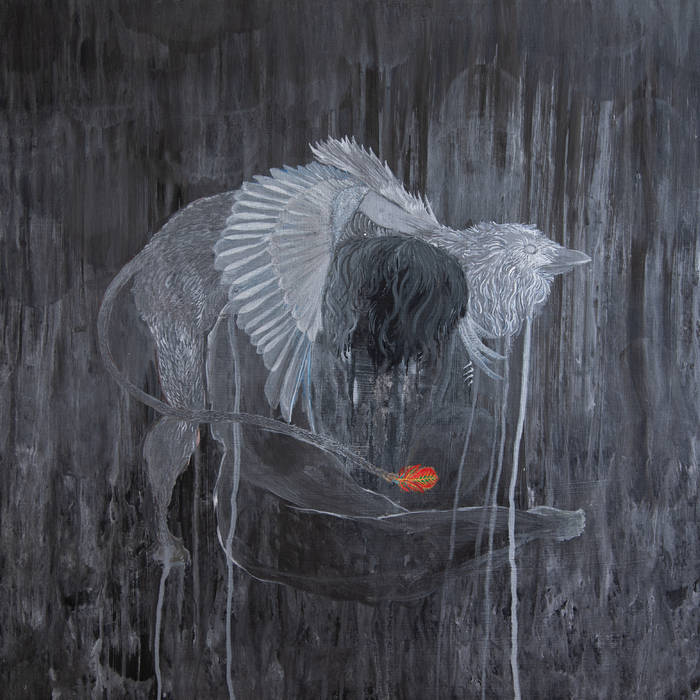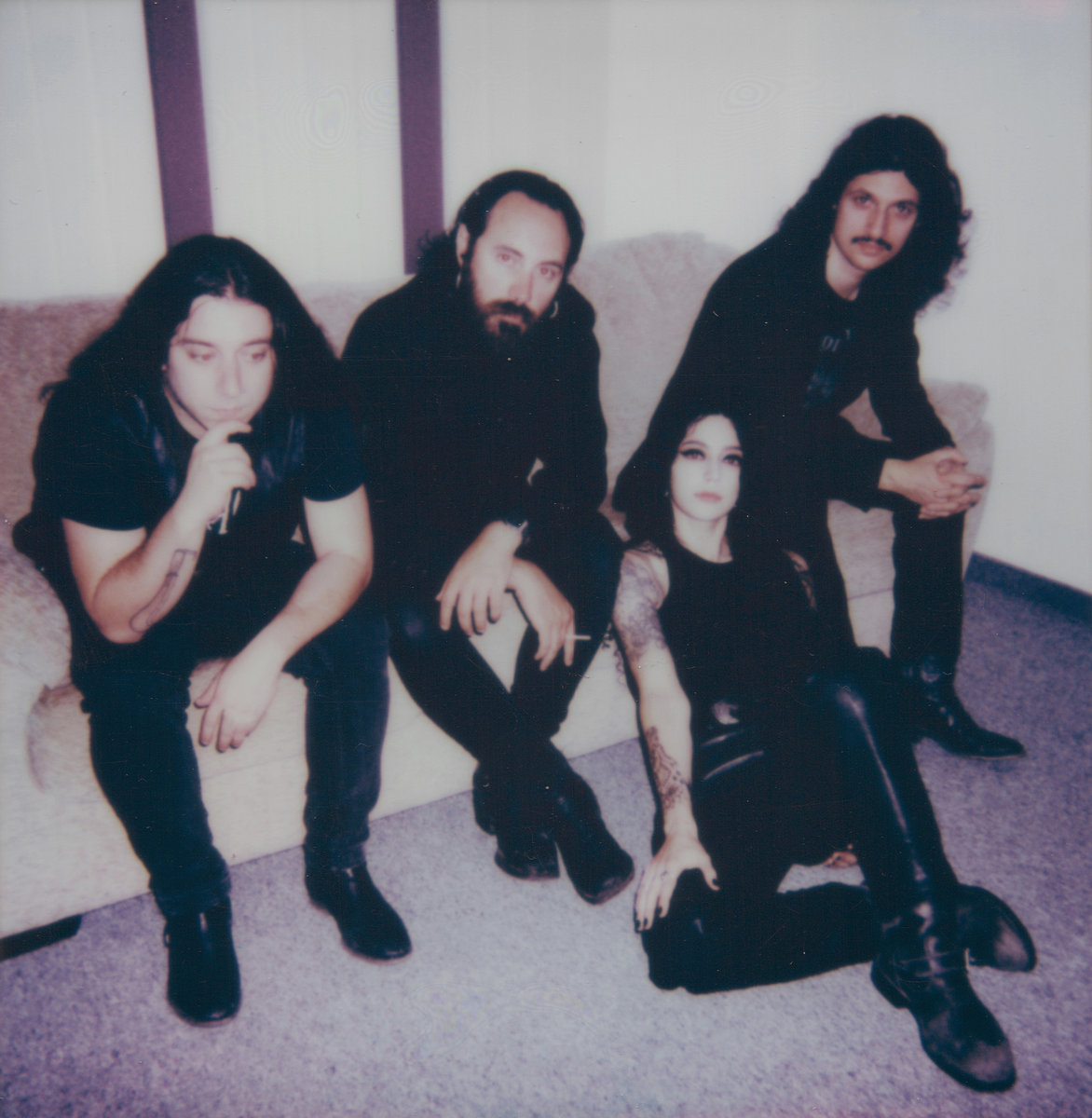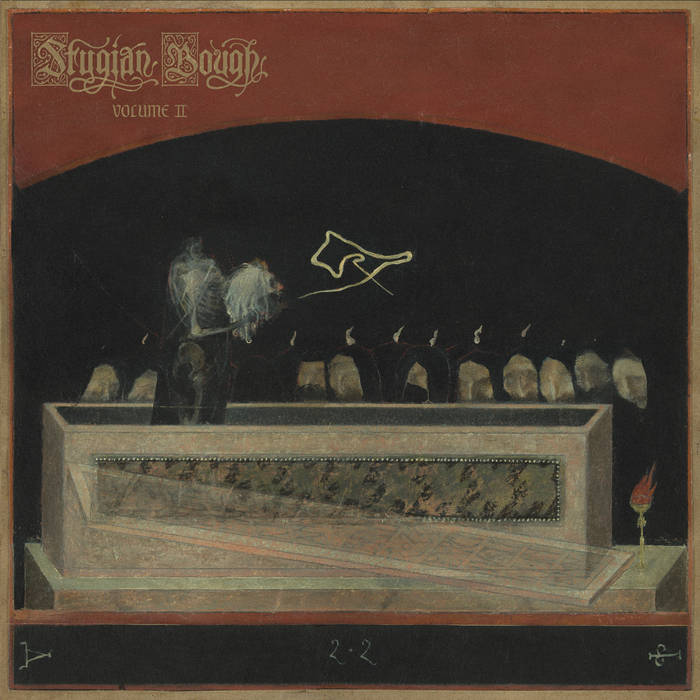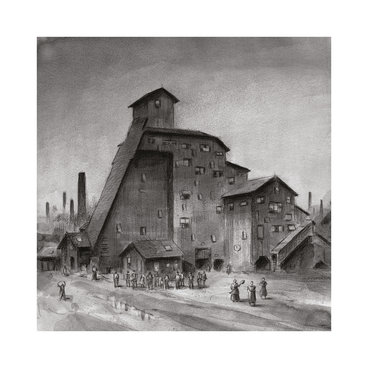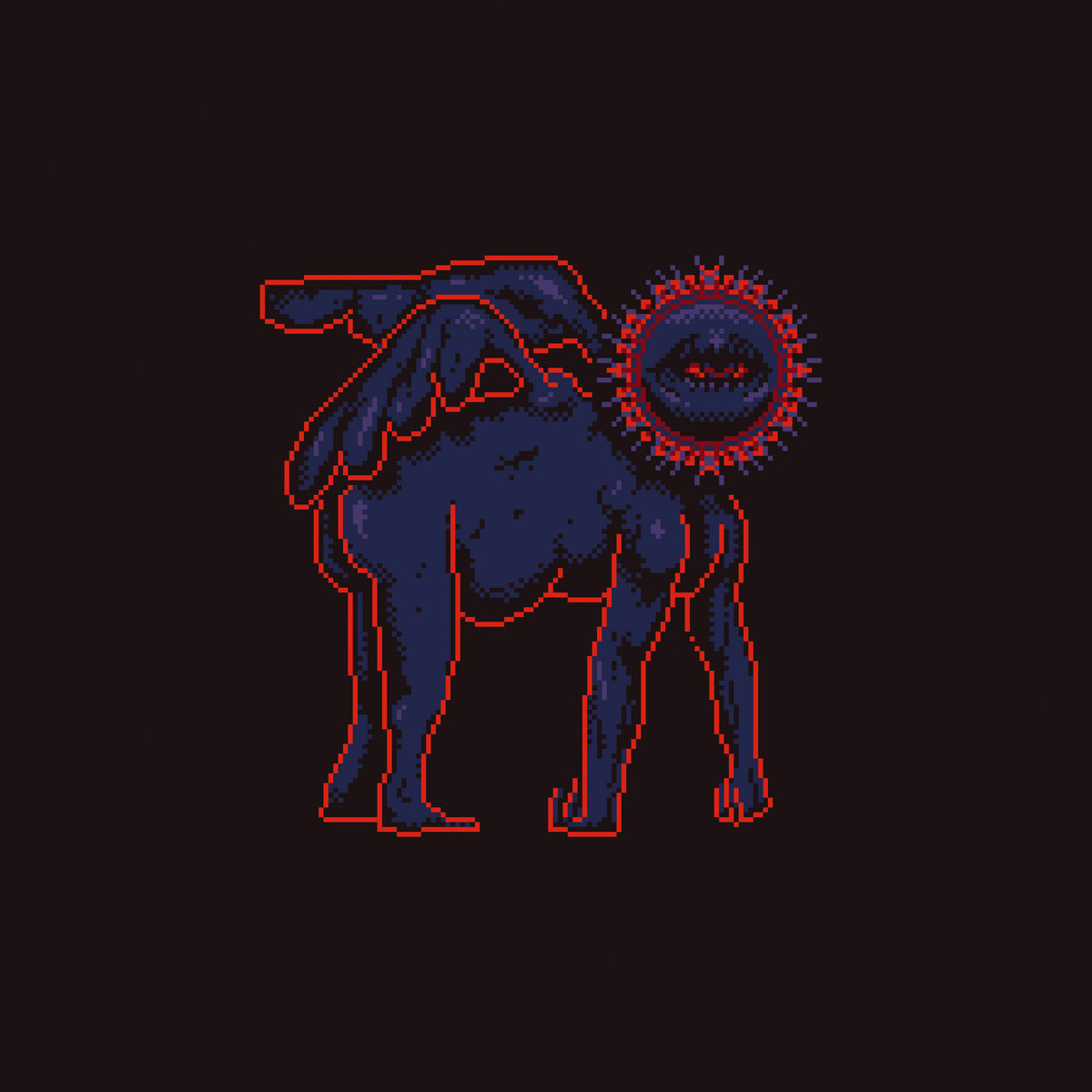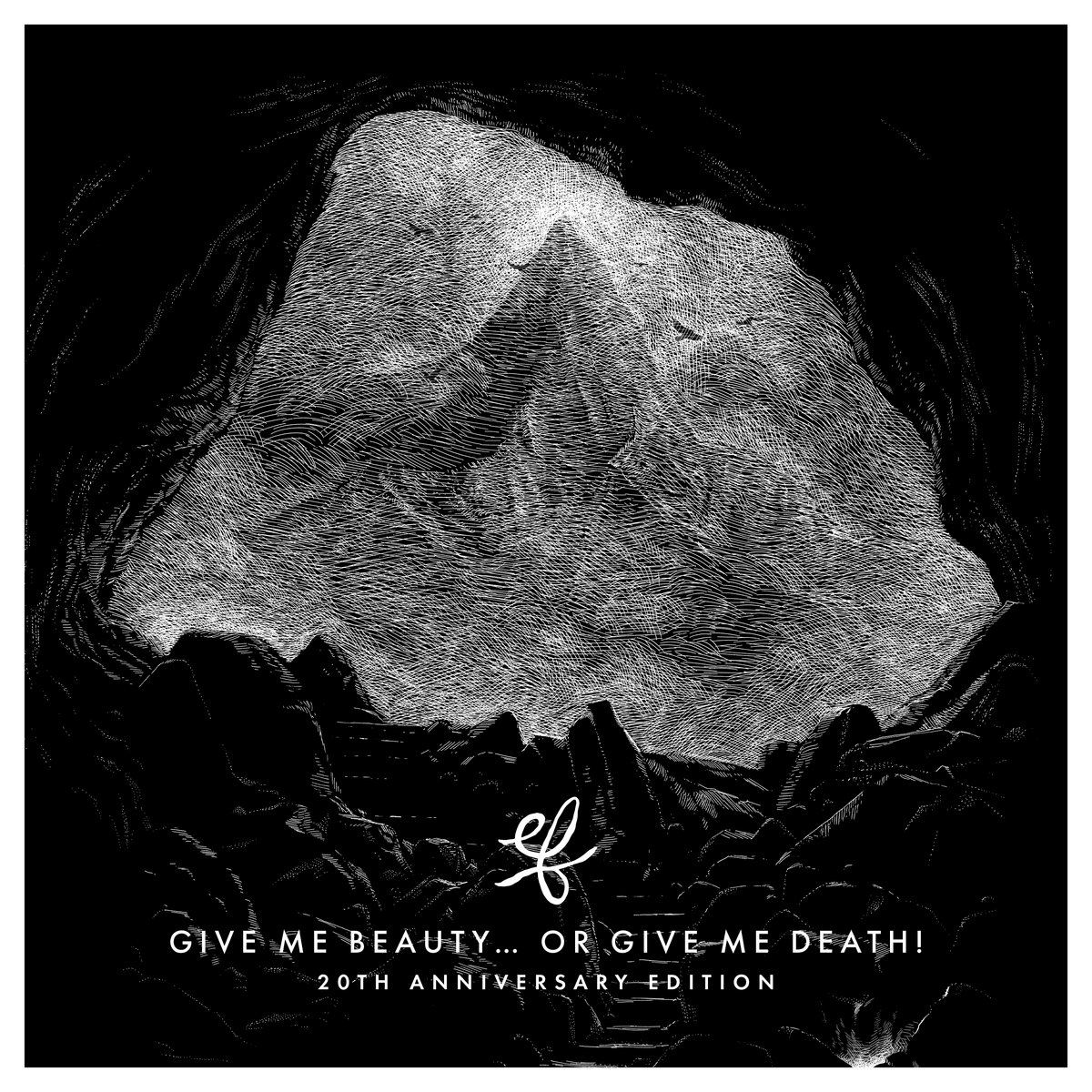Each summer day has its flies, but lately they seem unremitting, deliberate even. Like bombardiers they careen across sunlit afternoons, incessantly buzzing and wringing their…hands?…as if plotting nefarious deeds or relishing those accomplished. Like noontide demons sent to despoil the midday calm, their clamorous buzz festers, looms—an aural sign of something poorly repressed resurfacing. Even these spent carcasses on the windowsill—the crushed velour of their brilliant jackets now fading—still tremble with cryptic meaning: Ɐ A Ɐ A A What could they possibly signify? What dark mote perdures in this summer sky? These can mean only one thing: today we reckon with the length of cold shadows cast by an unheralded January offering, VAURA’s Vista of Deviant Anatomies.
Experimental collective VAURA have always been difficult to classify, but their restless creativity has come to represent something of a signature ethos, and they specialize in irruptions of the eerie. Their first two albums brought a goth/new wave sound into the new millennium with liberal extrusions of black metal and some of the most undying hooks around. These albums showcased VAURA’s mastery at crafting haunting melodies seeming always to veer unexpectedly, even turn back upon themselves, but still keenly recalled for days later. Selenelion (2012) hit with oceanic force, billowing between washes of shimmery art rock and sharp, spectral black metal, while its doppelgänger The Missing (2013) adopted a warmer, darker, almost garage rock sound appropriate for its songs of personal struggle. On Sables (2019), the band explored more devious progressive musical resources to intensify their sound. The songwriting, now evidently more elastic, relied less on obvious “metal” extremity and grew more conceptually complex. Reciting an allegorical tale of catastrophic omnicide, Sables ends gesturing at a world where “humanity” has been eradicated, in concept if not in fact. Whatever conclusions may be drawn about an album dwelling on mass extinction, existential or otherwise, months before the outbreak of the coronavirus pandemic, Sables was a rousing protest album that asked “Will you choose persistence?” and another remarkable transformation further evolving the band’s strengths.
When Vista of Deviant Anatomies dropped unexpectedly in January 2022 with a disclaimer that three of its songs were indebted to Thomas Ligotti, it was evident there would be no diminution of unease. Currently comprised of vocalist and multi-instrumentalist Joshua Strachan (Azar Swan, Meridiane, Vain Warr), guitarist Kevin Hufnagel (Dysrhythmia, Gorguts), and multi-instrumentalist Toby Driver (Alora Crucible, Bloodmist, Kayo Dot) — with additional support from percussionist Isidro Reyes, violinist Timba Harris, and clarinetist Jeremiah Cymerman, as well as a cache of creative commons samples — VAURA have produced their most uncompromising release to date. In prior interviews, Strachan mused on the limits of Sables’ narrative concept, apparently hoping to reassess how the band might further push the experimental envelope. Vista… is that testament. Dizzying in scope and sonically immersive, this album captures the band in a hardline veering toward their avant-garde pretensions.
The cover art by Raha Raissnia depicting an enclosed interior layered in shadows and traces of former habitation—how space might appear were it a palimpsest recording the imprint of debris and detritus left among the alluvial remains of time—is a clue that Vista… is a haunted record, full of spectral and not quite unreal manifestations. As if barely disquieting the surface of still water, “Starless Visions in an Opaque Dreamglass” ripples across a resonant guitar figure, lugubrious vocal lines, pulsating bass harmonics, and expertly sequenced gamelan-like pocks and tings before the crystalline calm is utterly demolished by the ominous pounding of some phantasmal foundry resuming operations. Such architectural tension usually has no business in an opening track, yet here we are. “Rosebud” draws back the curtain to a clandestine club where nightly congregations sway cadaverously through forgotten rituals to a world now gone. Though you cannot help but join the frenzied dance, it is best to remain cautious. For these ghouls fetishistically totter atop curiously arrayed, unseemly limbs, impelled only “to decombine with other numbers and disidentify.” Worth the price of admission alone, “The Outlander” sidles in upon a percussive assault punctuated by squonking clarinet and angular guitar before momentarily attaining clemency in the chorus, one of the most beautiful dramatic releases on the album. “Repulsion Paradigm” unsteadies proceedings, closing out Side A with the insect-hum of its central riff cresting the rhythmic pitches and troughs of a drifting buoy’s yaw. Enthralling as the first half is, Side B all but abandons any remaining concessions to conventional song structure for a totalizing immersive experience. The puckish jaunt of “The Hybrid Abomination”, such as a passing sylvan troupe might play, gradually incorporates spits of noise, chanting, and ululation before reverberant, motiveless doorbells and alarms conjure the abject neurosis of companion track “Acolyte of Sacred Mania”. Instrumentation toward the close of the album heavily favors skirling violin often in counterpoise to the guitars’ unhinged deviations. Amidst deconstructive interludes, “White Cocoons” pits abject vocal-fry moans against dirgeful violin, ultimately resolving in mellifluous lines of woody clarinet, before multiphasic “Music of the Moon” suppurates in tidal pools of arcane whispers.
The one thing certain with VAURA is consummate musicianship. While all members ply guitar duties on this record, Hufnagel performs with customary dexterity and tone. He’s particularly mercurial on this album, so in addition to his usual melodic or choral habitats, you may have to flush him out of hiding, off to the side here in a transverse lick or back on the horizon there, summoning the radiational fuzz of the cosmos. If Driver’s boogie and electronic wizardry have not endlessly impressed you before, then pay attention to his ubiquitous presence. He and Strachan collaborate on drum programming duties in the absence of former drummer, Charlie Schmid, to wild, unconventional effect. Mixing the record, Driver further acquits himself equal to if not a head above the band’s previous output, producing a lush, spacious soundscape. And may all qualifications about Strachan’s technical limitations henceforward cease? His vocal prowess is stunning, and this is undeniably his album. He runs the gamut of vocal techniques, with some unexpected permutations sitting comfortably alongside his signatures: barrel-chested gales trained with just the right tinge of irony through a nasal mask and, my favorite—O! — the inimitable blue velvet croon.
With Vista of Deviant Anatomies, VAURA have produced my favorite and I think their best album. Had you asked me before I might have given those honors, respectively, to The Missing and Sables. But this is afterward, and a new reckoning awaits.




